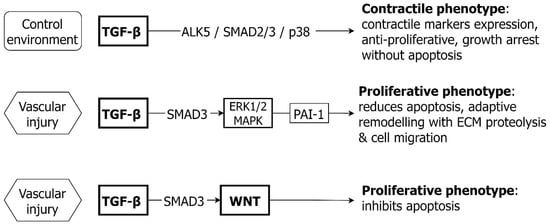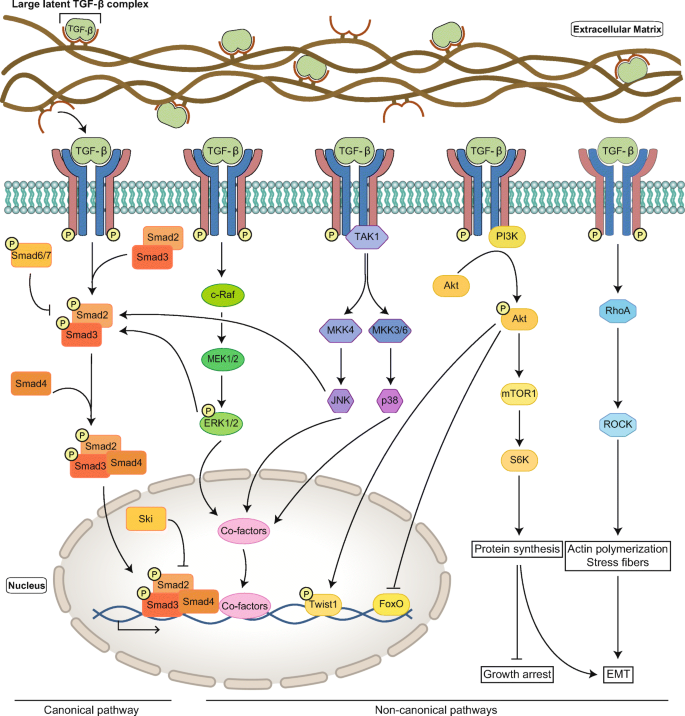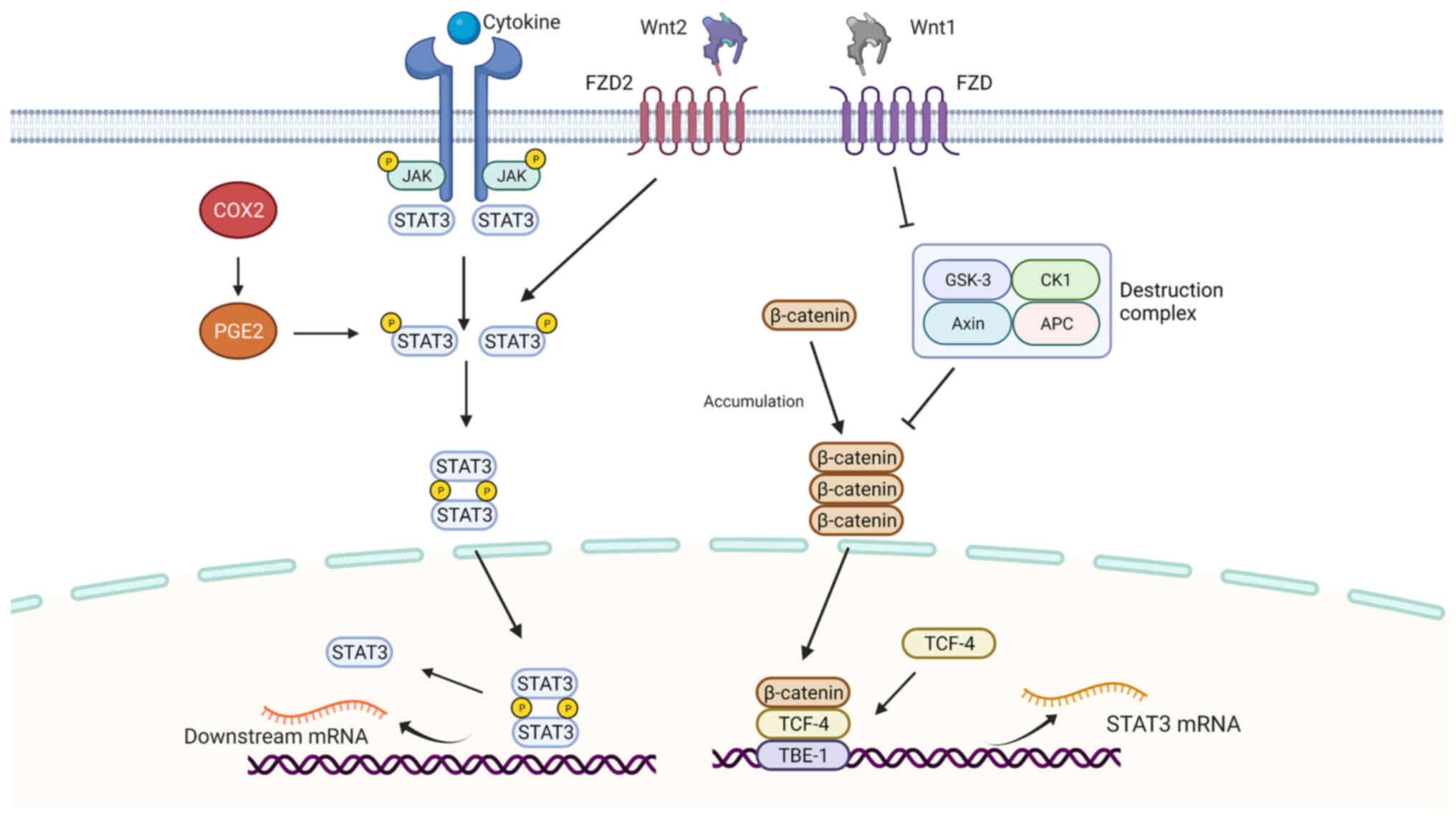Molecular Mechanisms in Genetic Aortopathy–Signaling Pathways and Potential Interventions
Por um escritor misterioso
Last updated 10 novembro 2024

Thoracic aortic disease affects people of all ages and the majority of those aged <60 years have an underlying genetic cause. There is presently no effective medical therapy for thoracic aneurysm and surgery remains the principal intervention. Unlike abdominal aortic aneurysm, for which the inflammatory/atherosclerotic pathogenesis is well established, the mechanism of thoracic aneurysm is less understood. This paper examines the key cell signaling systems responsible for the growth and development of the aorta, homeostasis of endothelial and vascular smooth muscle cells and interactions between pathways. The evidence supporting a role for individual signaling pathways in pathogenesis of thoracic aortic aneurysm is examined and potential novel therapeutic approaches are reviewed. Several key signaling pathways, notably TGF-β, WNT, NOTCH, PI3K/AKT and ANGII contribute to growth, proliferation, cell phenotype and survival for both vascular smooth muscle and endothelial cells. There is crosstalk between pathways, and between vascular smooth muscle and endothelial cells, with both synergistic and antagonistic interactions. A common feature of the activation of each is response to injury or abnormal cell stress. Considerable experimental evidence supports a contribution of each of these pathways to aneurysm formation. Although human information is less, there is sufficient data to implicate each pathway in the pathogenesis of human thoracic aneurysm. As some pathways i.e., WNT and NOTCH, play key roles in tissue growth and organogenesis in early life, it is possible that dysregulation of these pathways results in an abnormal aortic architecture even in infancy, thereby setting the stage for aneurysm development in later life. Given the fine tuning of these signaling systems, functional polymorphisms in key signaling elements may set up a future risk of thoracic aneurysm. Multiple novel therapeutic agents have been developed, targeting cell signaling pathways, predominantly in cancer medicine. Future investigations addressing cell specific targeting, reduced toxicity and also less intense treatment effects may hold promise for effective new medical treatments of thoracic aortic aneurysm.

Transforming Growth Factor-β and the Renin-Angiotensin System in Syndromic Thoracic Aortic Aneurysms: Implications for Treatment

IJMS, Free Full-Text

Targeting Ferroptosis as a Novel Approach to Alleviate Aortic Dissection

Molecular mechanism, regulation, and therapeutic targeting of the STAT3 signaling pathway in esophageal cancer (Review)

Genes were differentially expressed in the aorta of WT and Fbn1mgR/mgR

Angiogenesis in Aortic Aneurysm and Dissection: A Literature Review

Angiogenesis in Aortic Aneurysm and Dissection: A Literature Review

PDF] Vascular Smooth Muscle Cells in Aortic Aneurysm: From Genetics to Mechanisms

IJMS, Free Full-Text

Schematic overview of signaling pathways between endothelial cells

Cardiogenetics: genetic testing in the diagnosis and management of patients with aortic disease
Recomendado para você
-
 Lario Diniz – Medium10 novembro 2024
Lario Diniz – Medium10 novembro 2024 -
 ArtStation - Saco Cheio TV10 novembro 2024
ArtStation - Saco Cheio TV10 novembro 2024 -
 Arthur Petry (@ArthurPetryy) / X10 novembro 2024
Arthur Petry (@ArthurPetryy) / X10 novembro 2024 -
 Tô com hem0rr0ida (058) Saco Cheio Podcast com Arthur Petry10 novembro 2024
Tô com hem0rr0ida (058) Saco Cheio Podcast com Arthur Petry10 novembro 2024 -
Os vídeos de Arthur Petry Oficial (@arthurpetryoficial) com som original - Arthur Petry Oficial10 novembro 2024
-
 Corona, Quarentena, Treino em casa, e Sanidade // Arthur Petry, Alê, Leandro Twin, Gabriel arones by AronesCast10 novembro 2024
Corona, Quarentena, Treino em casa, e Sanidade // Arthur Petry, Alê, Leandro Twin, Gabriel arones by AronesCast10 novembro 2024 -
Qual a tua opinião sobre este acontecimento? #casamento #mairacardi #t10 novembro 2024
-
Arthur Petry - Minha opinião sobre o Islã: 1 - Sei lá, cara. 2 - Trocar 72 virgens no paraíso por 72 vagabundas. 3 - De resto, tá tudo bem.10 novembro 2024
-
 Mario Schwartzmann, Brazilian Flat Earther, Anti-Vax, Anti-Semite, etc. influencer died January 13th, 2022 due to untreated diabetes. More context and translations in the comments. : r/DeathsofDisinfo10 novembro 2024
Mario Schwartzmann, Brazilian Flat Earther, Anti-Vax, Anti-Semite, etc. influencer died January 13th, 2022 due to untreated diabetes. More context and translations in the comments. : r/DeathsofDisinfo10 novembro 2024 -
 Box O Poder Dos Negócios 3 Livros + Livro Negócio Do Século10 novembro 2024
Box O Poder Dos Negócios 3 Livros + Livro Negócio Do Século10 novembro 2024
você pode gostar
-
 Ian Nepomniachtchi x Ding Liren - FIDE World Championship 2023 - Partida 610 novembro 2024
Ian Nepomniachtchi x Ding Liren - FIDE World Championship 2023 - Partida 610 novembro 2024 -
The-rake-noob-edition-gui/.GUI at main · 3EloHIyChay123123/The-rake-noob- edition-gui · GitHub10 novembro 2024
-
 Forza Horizon 2 ROM & ISO - XBOX 360 Game10 novembro 2024
Forza Horizon 2 ROM & ISO - XBOX 360 Game10 novembro 2024 -
Buy Castle Crashers & Pit People Bundle10 novembro 2024
-
 Bucks-Suns Game 5 live stream (7/17): How to watch NBA Finals online, TV, time10 novembro 2024
Bucks-Suns Game 5 live stream (7/17): How to watch NBA Finals online, TV, time10 novembro 2024 -
 ▷ Como Hackear Subway Surfers con Lucky Patcher 2023 ❤️ DONTRUKO10 novembro 2024
▷ Como Hackear Subway Surfers con Lucky Patcher 2023 ❤️ DONTRUKO10 novembro 2024 -
 esportes-olimpicos-para-imprimir-colorir%285%29.JPG (464×67710 novembro 2024
esportes-olimpicos-para-imprimir-colorir%285%29.JPG (464×67710 novembro 2024 -
CarX Drift Racing 2 – Apps no Google Play10 novembro 2024
-
 Convite de aniversário Barbie Paris para preencher, baixe grátis convites para edit…10 novembro 2024
Convite de aniversário Barbie Paris para preencher, baixe grátis convites para edit…10 novembro 2024 -
 Antigo Jogo Papa Mosca Gugu - Estrela Anos 90 - Escorrega o Preço10 novembro 2024
Antigo Jogo Papa Mosca Gugu - Estrela Anos 90 - Escorrega o Preço10 novembro 2024



